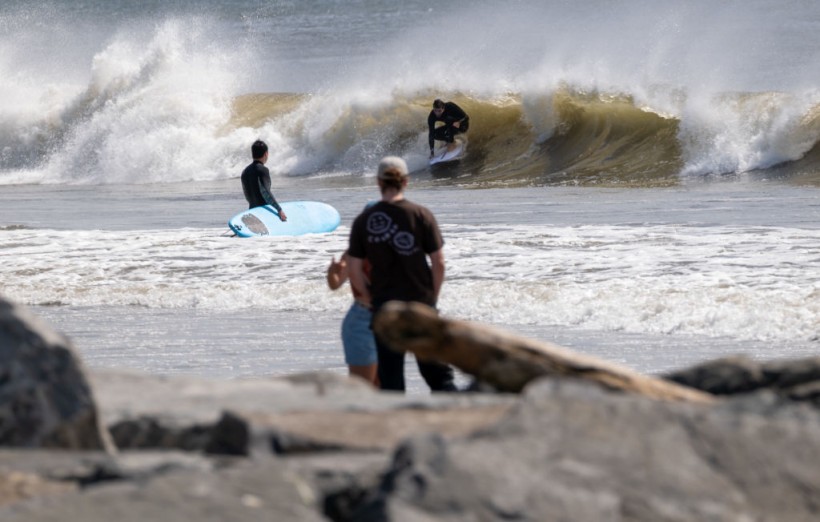Health experts warn of an increased risk of flesh-eating bacteria infections as temperatures rise and hurricane and flooding season approaches, according to a new Centers for Disease Control and Prevention (CDC) health advisory.
The September 1 CDC health alert lists 12 Vibrio bacteria types that cause 80,000 infections in the U.S. yearly, according to U.S. News & World Report. The Vibrio vulnificus strain is among the most dangerous of the Vibrio types and it can cause "flesh-eating" infection. The CDC news release also indicated that 150-200 instances of severe condition are documented annually, and one in five patients die one or two days after symptoms appear.
Risk of Flesh-Eating Bacteria Infection Rises Due to Climate Change
Warming waters, especially in the summer and during hurricane season, are directly related to the growing hazard of these illnesses. Estuaries, inlets, and other warm, brackish water—a combination of ocean and freshwater—have been the main sites of Vibrio bacterium infections in Gulf Coast states. Hurricanes help create those conditions.

Surfers ride waves at Rockaway Beach in New York as high surf from Hurricane Franklin delivers strong rip tides and large waves to most of the eastern seaboard on August 31, 2023, in New York City.
James Oliver, a retired professor of microbiology at the University of North Carolina in Charlotte, noted that "the rainwater, being freshwater, dilutes the seawater and brings the salinity down," creating the perfect conditions for Vibrio to flourish and spread, according to NBC News.
Notably, from 1988 to 2018, there was an eightfold rise in Vibrio infections in the Eastern United States, and now spreading along the coast at a pace of around 30 miles per year, which alarms experts. North Carolina, Connecticut, and New York have reported serious and deadly cases.
Climate change is indirectly causing Vibrio to spread in addition to warming the oceans. Vibrio can grow even though these bacteria cannot live in saltwater at its maximum salinity, which is caused by melting glaciers.
Read Also: Shocking Study Reveals Hazardous Chemicals from Plumbing Seals Contaminating Drinking Water
How to Protect Yourself
Most people get infections from raw or undercooked shellfish, especially oysters. However, Vibrio strains in touch with open wounds may infect others. This includes recent surgeries, piercings, tattoos, and cuts and scratches.
Vibrio infections are not transmissible, says the CDC. However, Liver disease, diabetes, and compromised immune systems make people more susceptible.
To prevent Vibrio infection, per its health alert, the CDC recommends the following safety actions:
- Stay out of salty and brackish water if you have an open wound or cut. If you get a cut while you are in the water, leave the water immediately.
- If your open wounds and cuts could come in contact with salt water, brackish water, or raw or undercooked seafood, cover them completely with a waterproof bandage.
- Wash open wounds and cuts thoroughly with soap and clean, running water after they come in contact with salt water, brackish water, or drippings from raw or undercooked seafood.
- Cook raw oysters and other shellfish before eating. Always wash your hands with soap and water after handling raw shellfish. Seek medical attention right away for infected wounds.
To avoid infection, flesh-eating illnesses are treated by quickly removing dead tissue aside from the administration of antibiotics, according to an article on Overlake Medical Center's site. The sooner this intervention takes place, the less tissue will need to be removed by the surgeons to adequately treat the infection.
Related Article: COVID Spreading in Florida: Hospitalizations, Deaths on the Rise










